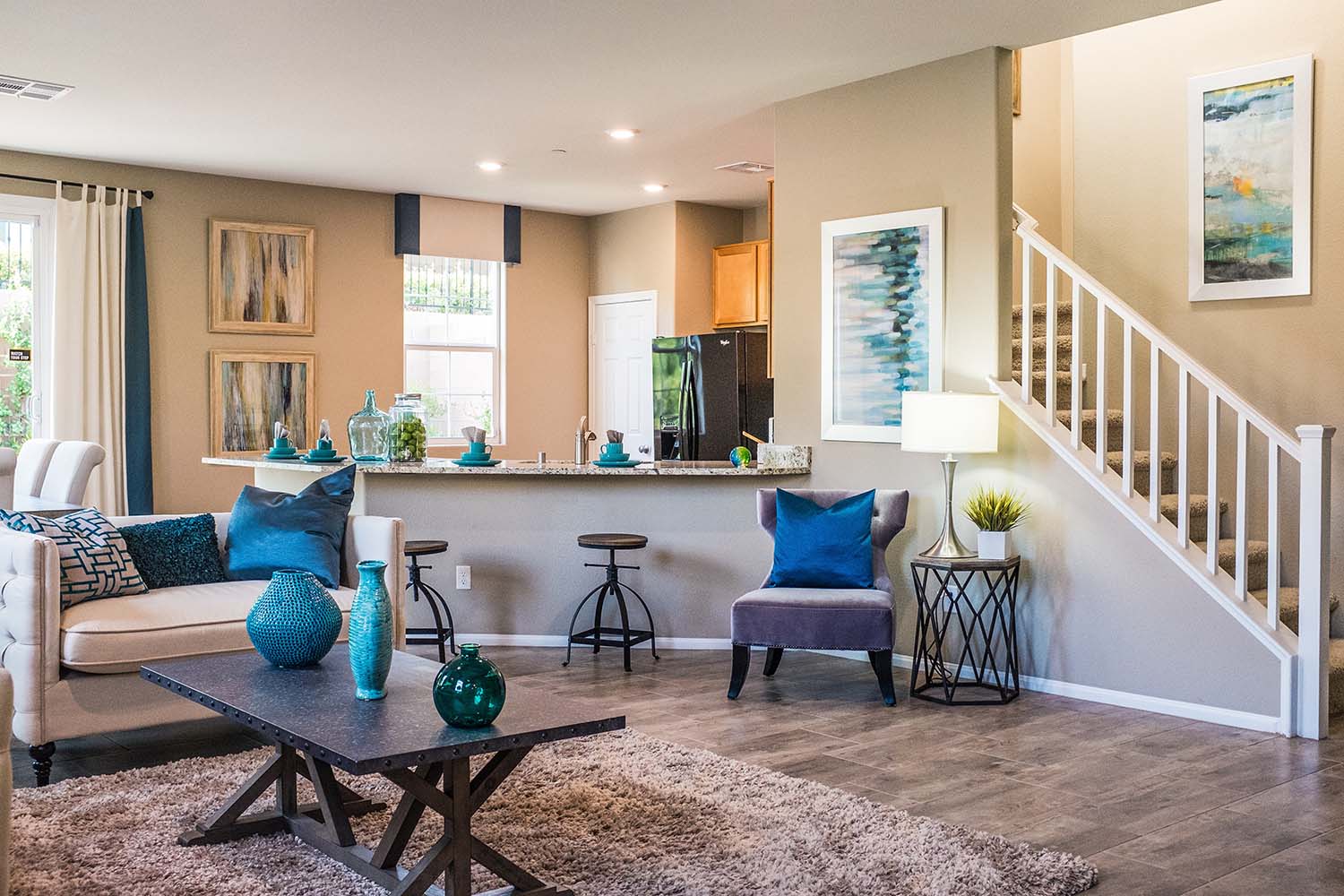The colours we choose for our home interiors are often influenced by a number of factors, from personal taste to what’s on-trend this year. If you’re thinking of redecorating your home and are unsure about how to choose the best home colour scheme, this handy guide is here to help you make a decision you’ll be happy with now and long into the future. Before you reach for those paint swatches, here are a few things you might want to think about…

Photo, Pierre Bamin.
Understanding the colour wheel
Many interior design tips include starting at the beginning with a quick recap of something very basic which you probably learnt as a young child. There are three primary colours from which all other colours are mixed, and those are red, yellow and blue.
Mix two of these together and you create secondary colours; red and yellow make orange, for instance, while yellow and blue make green. Mix a primary and a secondary colour and you get the tertiary colours, which are much more nuanced shades of secondary colours and are far more complex.
One of the easiest ways to think about these colours is by putting them on a colour wheel, which allows us to visualise them all in one place and see which ones catch our eye. Each colour takes up a segment, with the secondary colours sitting between the primary ones and the tertiary colours between the secondary. By using the colour wheel, this allows you to see which colours harmonise and which provide contrast which can provide very useful in home decor colour schemes.
Warm and cool colour tones
The colour wheel divides nicely into warm colours and cool colours, something you need to think about before you decide on your colour scheme. Warm colours such as red, orange, yellow and burgundy can create a cosy atmosphere in a room, while blue, purple, turquoise and green are associated with feelings of calm and tranquillity. Think about the atmosphere you want to create in your space; warm colours can work well in comfy living rooms and cool colours can help you feel focused in your home office.
We often develop certain associations with colour as well, so warm colours conjure up fire, heat, sunshine and passion, and cool colours might be linked to nature, water, twilight and the sky. Which side of the colour wheel feels best suited to the room, how it will be used and how you want the space to make you feel? Then take a good, long look at the colour wheel and see which fits the bill.

Photo, Kenny Eliason.
Knowing the right shades for your home
Big blocks of strong colour can be quite overwhelming, so you probably don’t want to paint the whole room in a single colour. To tone things down a bit, you could create a feature wall of one bold colour and use more neutral shades elsewhere. Some people choose to make a feature of the chimney breast, for instance, paired with a single wall in the same shade and the remaining walls in tones of grey, magnolia or softer browns.
Pastel colours also work a treat in toning down strong feature walls, especially if they’re a more subtle and subdued shade of the original. You could also choose to paint the whole room in these more neutral shades and inject the real colour in other ways, for example by selecting a lampshade from luxury lampshade specialists or a rug in a bold tone.
These little pops of colour around the place can be an incredible way to inject personality, and it’s something which is very on-trend at the moment.
Finishing touches to your home decor
Think about how the colours you choose will work with your home lighting. Colours can appear different under artificial light in the evenings, so always do patch tests beneath your wall lights or standing lamps and view them in both daylight and under the light bulb.
Choosing a home colour scheme is a big thing and can really affect how you perceive your living space. Take your time, think about how the room is used and see which colours jump out at you. Make the right choices now and your room will still be a place you love in years to come.








